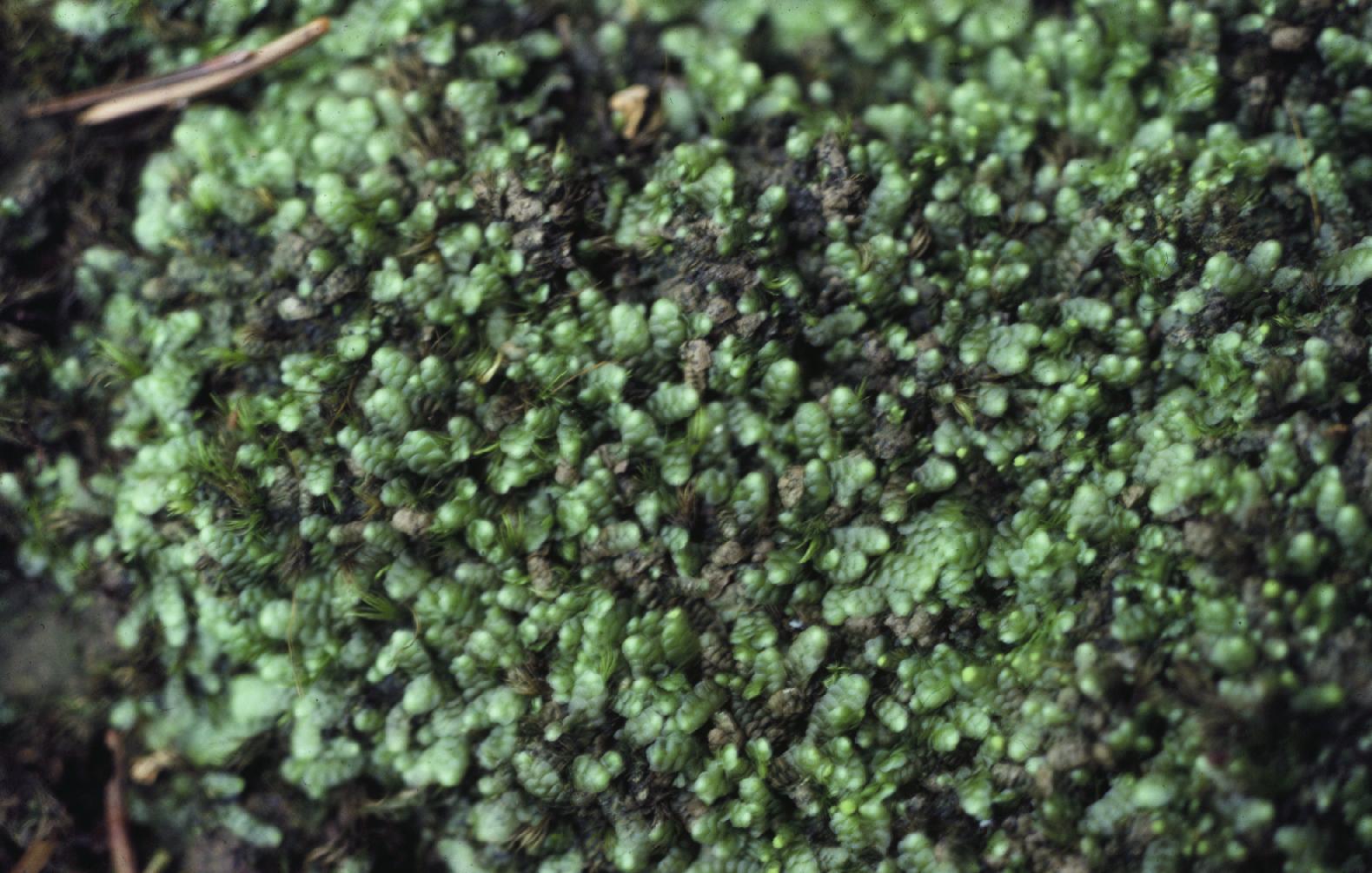Calypogeia muelleriana
(Calypogeia muelleriana)

Description
This is generally the least frequent of the three common Calypogeia species, because of its more demanding habitat requirements. It looks similar to C. fissa, albeit often more grey-blue, but has broadly rounded, entire leaf tips, and underleaves with shallow notches and no side lobes. Gemmae are often abundant. Shoots aretypically 1.5-3.5 mm wide, and leaves a little under 2 mm long and wide. C. muelleriana can be confused with C. fissa (p. 85), as some plants are rather intermediate, but almost all apparent intermediates can be named with care. C. muelleriana has rounded leaf tips that almost never end with a notch and are only rarely bluntly pointed like those of C. fissa; more importantly, the underleaves of C. muelleriana are shallowly notched and have no extra lobe on their sides. The underleaves of C. muelleriana can look almost unnotched and may therefore resemble those of C. neesiana and C. integristipula (p. 88), but the shoots of both those species are visibly more opaque, with translucent leaf borders. C. azurea (p. 87) has vivid blue oil bodies. C. muelleriana avoids calcareous substrates. It is found most frequently on peat, and more rarely on mineral soil or clay. It grows in woodlands, especially conifer plantations, on peatlands, bogs and heaths, particularly in the mountains. C. muelleriana shuns the really wet places where C. fissa may grow, such as bog pools.
Taxonomic tree:







